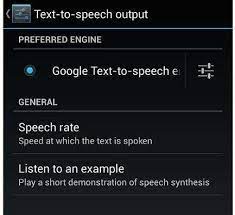In recent years, the United States has seen numerous changes in education laws, and many of these laws have become a part of the country’s ongoing culture war. Here are 64 education laws that have contributed to this escalating conflict:
1. The No Child Left Behind Act: This law, passed in 2001, sought to hold schools accountable for student achievement, but has been criticized for encouraging teaching to the test.
2. The Common Core State Standards: These academic standards for English and math were adopted by most states but have faced opposition and criticism for promoting a one-size-fits-all approach to education.
3. Title IX: This law prohibits discrimination based on sex in education programs that receive federal funding. Controversy has recently centered on how Title IX applies to transgender students.
4. The Individuals with Disabilities Education Act: This law requires that schools provide free and appropriate education to students with disabilities but has been criticized for placing undue burdens on schools.
5. The Every Student Succeeds Act: This law, passed in 2015, replaced No Child Left Behind and gives more power to states to determine education policies.
6. The Higher Education Act: This law provides federal funding for colleges and universities but has been criticized for contributing to rising student debt.
7. The Student Aid and Fiscal Responsibility Act: This law, passed in 2010, made major changes to the federal student loan program and increased funding for Pell Grants but faced opposition from some Republicans.
8. The Elementary and Secondary Education Act: This law is the main source of federal funding for K-12 education.
9. Title I: This part of the Elementary and Secondary Education Act provides extra funding for schools with many low-income students.
10. Title V: This part of the Elementary and Secondary Education Act provides funding for innovative education programs.
11. Title IV: This part of the Elementary and Secondary Education Act provides funding for various education programs, including school safety initiatives and technology.
12. Title VI: This part of the Elementary and Secondary Education Act funds rural and low-income schools.
13. Title VII: This part of the Elementary and Secondary Education Act provides funding for bilingual and immigrant education.
14. Title VIII: This part of the Elementary and Secondary Education Act provides funding for Indian education.
15. Title IX: This part of the Elementary and Secondary Education Act provides funding for physical education and health programs.
16. The McKinney-Vento Act: This law supports homeless students, including ensuring they have access to education.
17. The Workforce Innovation and Opportunity Act: This law provides funding for job training programs and has been criticized for not doing enough to address income inequality.
18. The Carl D. Perkins Career and Technical Education Act funds education programs that give students skills for specific careers.
19. The Higher Education Opportunity Act: This law contains provisions designed to improve access to higher education.
20. The National Defense Education Act: This law provides funding for education programs in science and foreign languages.
21. The Education for All Handicapped Children Act: This law, passed in 1975, was the precursor to the Individuals with Disabilities Education Act.
22. The Higher Education Accessibility Act contained provisions to improve access to higher education for students with disabilities.
23. The Civil Rights Act of 1964: This law prohibits discrimination based on race, color, religion, sex, or national origin in education programs that receive federal funding.
24. The Higher Education Reconciliation Act of 2005: This law made major changes to the federal student loan program.
25. The Private Student Loan Debt Relief Act was introduced to provide relief for students struggling with high levels of private student loan debt.
26. The Student Loan Fairness Act was introduced to provide relief for students struggling with high levels of federal student loan debt.
27. The Safe Sport Act: This law aims to protect athletes from sexual abuse and exploitation in sports programs.
28. The Campus Accountability and Safety Act: This bill provides measures to prevent sexual violence on college campuses.
29. The Gainful Employment Rule: This rule requires for-profit colleges to show that they are preparing students for good-paying jobs.
30. The Credit CARD Act regulates credit card companies and protects consumers from predatory practices.
31. The Fair Labor Standards Act: This law provides workers with minimum wage and overtime protections.
32. The Affordable Care Act: This law includes provisions to improve access to healthcare and prevent discrimination.
33. The Violence Against Women Act: This law funds programs that address domestic violence and sexual assault.
34. The Americans with Disabilities Act prohibits discrimination against people with disabilities in education, employment, and other areas.
35. The Child Nutrition Reauthorization Act: This law provides funding for school meal programs.
36. The School to Prison Pipeline Act: This bill seeks to address the disproportionate discipline of students of color that can lead to them being pushed out of school and into the criminal justice system.
37. The Student Non-Discrimination Act: This bill seeks to protect LGBTQ students from discrimination in schools.
38. The Every Child Deserves a Family Act: This bill seeks to ensure that all children in foster care can be placed in loving, permanent homes.
39. The Truth in Tuition Act: This bill seeks to make college costs more transparent and prevent sudden tuition hikes.
40. The College for All Act: This bill seeks to make college education free for all students.
41. The Pregnant and Parenting Students Access to Education Act: This bill seeks to ensure that pregnant and parenting students have access to education and are not discriminated against.
42. The Neighborhood Schools Fairness Act: This bill seeks to prevent segregation and promote diversity in schools.
43. The Higher Education Transparency Act: This bill seeks to make college costs more transparent and provide students with more information about their school’s finances.
44. The Strengthening Transparency in Higher Education Act: This bill seeks to improve transparency and accountability in higher education.
45. The Higher Education Loan Payment and Enhanced Retirement Act: This bill seeks to provide relief for students struggling with student loan debt and help them save for retirement.
46. The Keeping All Students Safe Act: This bill seeks to prevent the use of dangerous and abusive restraint and seclusion practices in schools.
47. The Reducing Educational Debt Act: This bill seeks to reduce the burden of student loan debt for borrowers.
48. The Safer Schools Act seeks to prevent school violence and improve safety.
49. The College Completion Act: This bill seeks to improve college completion rates.
50. The Equal Education Access Act: This bill seeks to address disparities in access to educational opportunities.
51. The Department of Education Abolition Act: This bill seeks to abolish the Department of Education.
52. The Education Freedom Scholarships and Opportunity Act: This bill seeks to provide tax credits to individuals and corporations contributing to scholarship programs.
53. The IDEA Full Funding Act: This bill seeks to fully fund the Individuals with Disabilities Education Act.
54. The OppOrtunity to Require Open Book Inspections of Creditors Act: This bill requires federal student loan lenders to provide regular transparent reports on their lending practices.
55. The Credit Score Disclosure Act requires schools to disclose personal credit score details to students.
56. The Stop the Student Loan Interest Rate Hike Act: This bill seeks to prevent interest rates from increasing on certain federal student loans.
57. The Strengthening America’s Public Schools Through Promoting Equity and Diversity Act: This bill seeks to promote diversity in schools and address disparities in educational opportunities.
58. The College Transparency Act: This bill seeks to improve transparency and accountability in higher education by requiring schools to report data on student outcomes.
59. The Closing the College Affordability Gap Act: This bill seeks to reduce the cost of college and provide students with more affordable options.
60. The Student Debt Fairness Act: This bill seeks to provide relief for students struggling with high levels of student loan debt.
61. The Keeping Students Safe Act seeks to prevent sexual assault and harassment on college campuses.
62. The RESPECT Act: This bill seeks to make teaching a more respected profession and to improve teacher recruitment and retention.
63. The Public Service Freedom to Negotiate Act: This bill seeks to improve collective bargaining rights for public service employees, including teachers.
64. The Higher Education Loan Payments and Enhanced Retirement Act: This bill seeks to provide relief for students struggling with student loan debt and help them save for retirement.



